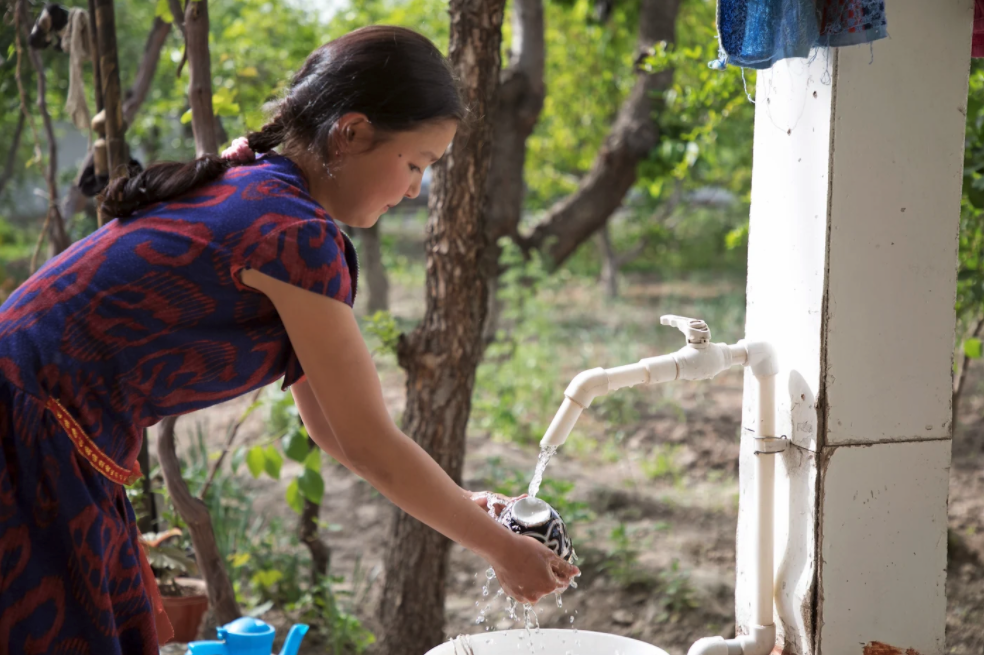
Photo:
With financing from the Green Climate Fund (GCF), the "National Adaptation Plan (NAP) to advance medium and long-term adaptation planning in Uzbekistan" project supported the Government of Uzbekistan to develop a NAP. This climate change adaptation plan was developed through an iterative process focused on strengthening foundational capacities to ensure that they were institutionalized for long-term sustainability. The project aimed to strengthen institutional and technical capacities for the development of a NAP and the integration of climate change adaptation into national and subnational planning and budgeting processes.
- National Governments
- Non-Governmental Organizations
- Private Sector Partners
- United Nations Development Programme (UNDP)
- Government of Uzbekistan
- Green Climate Fund
Expected outcomes
With the development of a NAP process, Uzbekistan laid the groundwork for the systemic and iterative identification of medium and long-term risks, allowing it to establish adaptation priorities and build out specific activities that ensure no one is left behind in the country’s work to reach its goals outlined through the Paris Agreement and 2030 Agenda for Sustainable Development. As part of the localization of the Sustainable Development Goals (SDGs), the NAP process contributed to the formulation of corresponding national climate-responsive indicators and targets.
Uzbekistan’s first NDC stated the government’s mitigation commitment to decrease emissions of specific greenhouse gases per unit of GDP by 10 percent by 2030, from 2010 levels. It also committed to continue its efforts on building adaptation capacity to reduce the risks of climate change and the adverse impacts it has on various sectors of the economy, social sector and the Priaralie (Aral Sea coastal zone). This project and the development of a NAP have helped Uzbekistan progress towards these targets over the next ten years until 2030.
This project, as part of Uzbekistan’s response to address current and potential climate impacts, aimed to advance the adaptation planning process for priority climate-sensitive sectors and regions in Uzbekistan. It accomplished this via achieving the following three end goals:
identify barriers to integration of climate change adaptation into development planning and budgeting, and subsequently build capacity of key stakeholders to effectively plan for and monitor adaptation in Uzbekistan;
consolidate existing climate information and put in place a system for science-based, economic analysis of adaptation options, to enable informed decision making in climate change adaptation in the country; and
identify options to sustainably finance the NAP process in Uzbekistan, and engage the private sector in supporting adaptation.
The main beneficiaries of GCF financing support were the Center of Hydrometeorological Services (Uzhydromet) under the Cabinet of Ministers of the Republic of Uzbekistan, as well as stakeholders from five key sectors (agriculture, water, health, housing and emergency management) and provincial governments in the three target provinces of this project (Karakalpakstan, Bukhara and Khorezm).
PROJECT RATIONALE
With a population of over 34 million, Uzbekistan is the most populous country in the Central Asia region. The economy is based on the production of commodities, particularly cotton, gold, uranium, and natural gas, with agriculture comprising 19 percent of the country’s GDP. Issues with water shortages and soil salinity and erosion, are serious issues in Uzbekistan, and around 20 percent of the country’s population are already affected by water salinization. This situation is worsened by the continuing disappearance of the Aral Sea, which has lost 80 percent of its volume and 64 percent of its depth in the past four decades. The combined effects mean climate change is expected to reduce crop yields by 20 – 50 percent through 2050.
PROJECT RESULTS
The project has delivered the following results under the three outcomes:
Vulnerability assessment conducted for the health sector, strengthened existing assessments for water resources and agriculture sectors
Adaptation financing and investment strategy developed, including establishment of a subset of the Inter-Agency Working Group (IAWG) on NAP to evaluate climate change adaptation investments
Enhanced coordination recommendations for Uzhydromet
Conducted trainings on economic assessment and prioritization of adaptation measures in the three target regions
Finalized five sectoral adaptation plans and initiated validation by national partners
Public-private partnership (PPP) options and a strategy to engage the private sector in climate adaptation produced
Capacity of research institutions, sector representatives, national specialists and university students developed through series of training events on adaptation planning, economic assessments of measures, as well as gender responsive planning
Recommendations for gender mainstreaming in sectoral adaptation plans developed
National legislation and strategies in key sectors reviewed and technical capacities of stakeholders assessed.
Developed an action plan to enhance climate adaptation curriculum for secondary education in Uzbekistan

